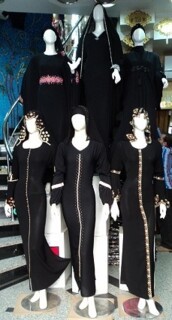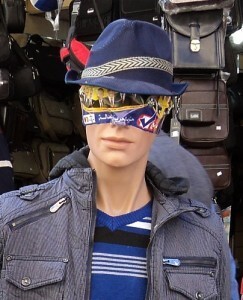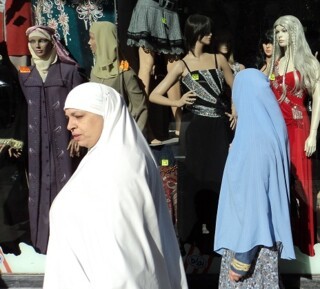In Alexandria
Carol Berger
In the streets of Alexandria, faces are disappearing: specifically, the hair, lips and eyes of mannequins. Stroll past the shop fronts and you will see the dividing lines. Observant shopkeepers display mannequins with no features at all. The faceless heads, emerging from the new season’s fashions, have no ears or noses, no hint of a cheek bone or eyebrow. Some are pristine, glossy white; others are silver or black. Shops selling religious goods, Wahhabi-style jalabiyas and Korans, use headless dummies – as do underwear shops, their windows crammed with plastic bosoms only partly covered by sheer negligees and lacy bras.
Half a street away, on Sharia el Nabi Daniel, four male mannequins have been placed on the pavement. The upper halves of their faces are concealed. Only their perpetual smiles are visible. The woollen cap on one has been pulled down; on another, a spooky piece of gauze has been taped across the eyes. The men in the shop explain to me that the showing of the face is haram, forbidden. They let me take photos. In two afternoons of photographing shop mannequins in Alexandria, only one person declined my request, and he was worried that I wanted to steal the designs of his conservative, full-length dresses.
There are still shops using mannequins of an earlier era, life-sized Barbie dolls with matted blonde or brunette wigs, bright blue eye shadow and parted red lips. Sometimes they’ll be crowded together, in groups of six or eight, their arms and legs positioned as if in mid-stride. On a Saturday afternoon in late December the streets were packed with shoppers. It felt like walking through a strange zoo: behind the glass, a cartoonish stereotype of western beauty and sexual availability; looking in, Egyptian women wearing the hijab or niqab and loose, ankle-length clothing.



Comments